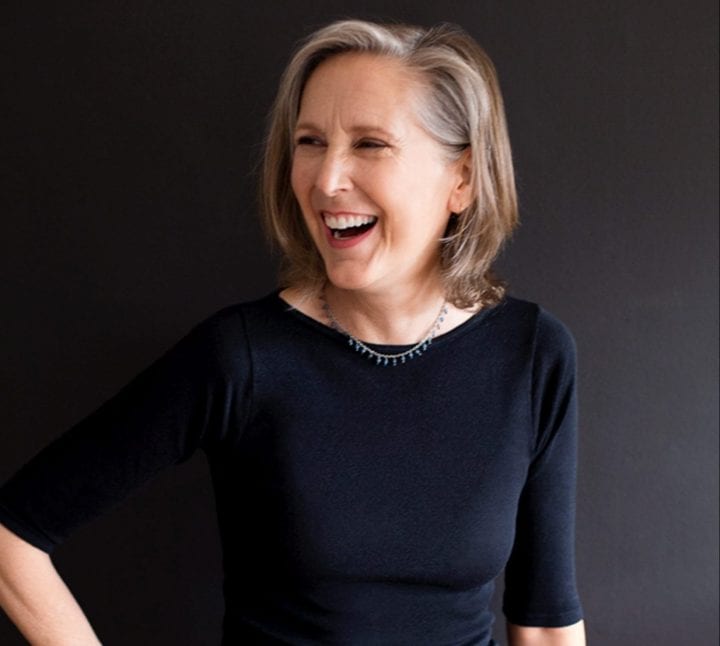Although this event has passed, you can still purchase a digital pass to view it through May 16 at 7:30 p.m. (PDT). The event will be available to watch until 12:01 a.m. on May 17.
“America’s funniest science writer” (Washington Post), the ever-curious and darkly irresistible Mary Roach is the author of books like Stiff: The Curious Lives of Human Cadavers and Grunt: The Curious Science of Humans at War, books that are about human beings as much as they are about the human body. Her forthcoming book is about the often fraught encounters between animals and people.
This event will be live and online only, with moderator Deborah Blum. Please note: this event begins at 6:00 p.m. (PDT).
All Literary Arts Series, Create Your Own Series, and Super SAL subscribers (except Student/25 & Under and complimentary subscriptions) receive Roach’s forthcoming book.
Roach grew up in a small house in Etna, New Hampshire—she has said her neighbors taught her how to drive a Skidoo and shoot a rifle, though she never made much use of these skills. She graduated from Wesleyan in 1981, and drove out to San Francisco with some friends, where she a few years working as a freelance copy editor before landing a half-time PR job at the SF Zoo. Her office was in a trailer next to Gorilla World. On the days when she wasn’t taking calls about elephant wart removal surgery or denying rumors that the cheetahs had been sucked dry by fleas, she wrote freelance articles for the local newspaper’s Sunday magazine.
In 1986, she sold a humor piece about the IRS to the San Francisco Chronicle. That piece led to a number of humorous, first-person essays and feature articles for such publications as Vogue, GQ, The New York Times Magazine, Discover Magazine, National Geographic, Outside Magazine, and Wired. She has also written articles for Salon.com and tech-gadget reviews for Inc.com.
Although Roach writes primarily about science, she never intended to make it her career. Roach stated in an interview with TheVerge.com, when asked what exactly got her hooked on writing about science, “To be honest, it turned out that science stories were always, consistently, the most interesting stories I was assigned to cover. I didn’t plan it like this, and I don’t have a formal background in science, or any education in science journalism. Actually, I have a bachelor’s degree in psychology.”
Roach mostly writes books these days, but she still writes the occasional magazine piece. These have run in Outside, National Geographic, New Scientist, Wired, and The New York Times Magazine. A 1995 article of hers called “How to Win at Germ Warfare” was a National Magazine Award Finalist, and in 1996, her article on earthquake-proof bamboo houses took the Engineering Journalism Award in the general interest magazine category, for which she says she was “let’s be honest, the only entrant.”
Roach is the best-selling author of the previous books Grunt: The Curious Science of Humans at War, Packing for Mars: The Curious Science of Life in the Void, Bonk: The Curious Coupling of Science and Sex, Spook: Science Tackles the Afterlife, and Stiff: The Curious Lives of Human Cadavers.
Deborah Blum, our moderator for the evening, is a Pulitzer-prizewinning American science journalist, columnist, and author of six books, including the 2018 New York Times Notable Book, The Poison Squad, and the New York Times bestseller, The Poisoner’s Handbook (2010). Her other books include Ghost Hunters (2010), Love at Goon Park (2006), Sex on the Brain (1997) and The Monkey Wars (1994). She has written for publications including the New York Times, the Washington Post, the Wall Street Journal, Time, Scientific American, Discover, and Wired. She is a former president of the National Association of Science Writers, was a member of the governing board of the World Federation of Science Writers, and currently serves on the board of the Council for the Advancement of Science Writing. Blum is co-editor of the book A Field Guide for Science Writers, and in 2015, she was selected as the fourth director of the Knight Science Journalism Program at MIT, where she is founding publisher of the award-winning digital science magazine, Undark. She lives in a late 19th century house in Boston with her husband, son, and a very spoiled Labrador.
